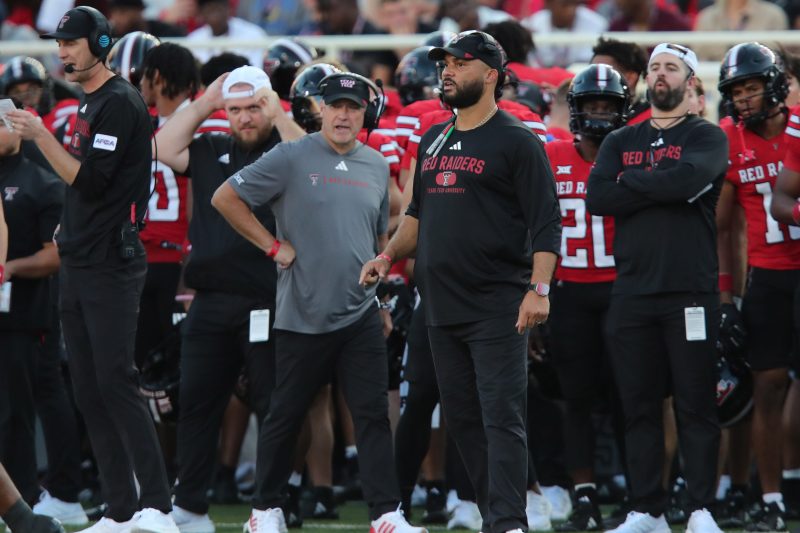
College football helmet technology fiasco the latest whiff following the NFL
Now it’s the helmet communications, the latest in a long line of this thing doesn’t fit.
Or maybe it could fit — if we knew what in the world we were doing.
“Sometimes, it feels like we’re running around plugging holes with good intentions,” LSU coach Brian Kelly told me in July about college football’s shoot-first, ask-how-the-darn-thing-works process of copying an NFL model.
The latest misstep (and I can’t believe I’m writing this): college football decided to copy the NFL’s helmet communications model ― without signal encryption. As absurd as it sounds, it shouldn’t be a surprise.
We’ve seen this movie, and we know how it plays out.
College football is not the NFL. No matter how university presidents and conference commissioners and athletic directors and coaches and players try to make it fit.
The SEC and the Big Ten aren’t the NFC and AFC. The College Football Playoff is not the NFL playoffs.
Recruiting is not the NFL draft, free-player movement is not free agency and pay for play is not the salary cap.
The NFL is a multi-billion dollar corporation with levels upon levels of research and contingency, all aimed at making one of the most successful sports on the planet bulletproof to outside influence.
College football is a multi-billion dollar conglomeration of small businesses, each publicly standing together in search of common ground — and each doing everything they can behind the scenes to separate from the other.
The NFL is a superhighway. One way in, one way out.
College football is a maze of confusion and consternation, walls and obstacles moving and shifting with each passing season. A perfectly imperfect symphony of chaos.
This brings us all the way back to college football’s latest failure to copy the NFL. Three decades ago, the NFL made the then-state of the art move to use helmet communications. They were tired of signals, and shuffling players in and out with play calls, and sign stealing from opponents.
Sound familiar?
So this offseason, the NCAA rules committee adopted the most basic of processes with helmet communication, and I know this is going to shock you, it this week become a convoluted mess of blame and conspiracy. Texas Tech asked the Big 12 to look into its games against TCU and Baylor (both losses) just to make sure everything is copacetic.
If you can’t beat ’em, they must be cheatin’.
All of this coming months after defending national champion Michigan had a former staffer scouting future opponents and stealing signals. You would think – after the former head coach of the defending national champions was suspended by his own conference for three games during the season for the sign stealing fiasco – college football wouldn’t wade into the great unknown of helmet communication (that’s sarcasm) without the exact model the NFL uses.
The exact model and process.
But instead of copying it to letter — including the all-important encryption of devices — college football decided to take this big step with open channels of communication, and now Texas Tech is (subtly) questioning how it lost to Baylor by 24 points. I swear, I’m not making this up.
This, of course, leads to tinfoil conspiracies that someone, somewhere in the stadium, has a scanner and is listening to sideline communications and giving one team a competitive advantage over the other.
So now the Power Four conferences have sent back the devices to the manufacturers, who will now install software updates that include encryption ― and send them back in time for Saturday’s games.
Absolutely hilarious.
Watching this circus from outside the tent, I reached out to a Power Four coach Wednesday night, who was so flustered while explaining the overreaction of another sign stealing event, he finally blurted out that maybe blocking and tackling is the better way to go.
Let’s just say a person in the stadium has a scanner, and let’s just say that person can find the correct channel despite most stadiums now full of Wi-Fi access, and anywhere from 65-105,000 cell phones in a confined space. Give or take an apathetic fan base.
That person is going to to find the correct channel, and it will be clear and can be heard and understood without interruption. And then the heavy lifting begins: figuring out the team’s play call verbiage.
Because the headsets cut off at the 15-second mark of the play clock, the person with scanner that hasn’t been affected in any way by all of those Wi-Fi signals and cell phones in close proximity of each other, then has to translate what amounts to Mandarin Chinese into football speak, switch to their team’s channel and send the play call.
At that point, the staff on the sidelines has to assess the defense (or offense) of the opponent, decide how to adjust, and then signal the play call change onto the field.
In all of 15 seconds.
And you wonder why college football can’t figure out NIL guidelines, and free-player movement, and pay for play, and non-conference schedules, and just about every other thing the sport gets its hands on while moving closer and closer to the NFL model.
Just block and tackle, baby.
That’s about as perfectly imperfect as it gets.
Matt Hayes is the senior national college football writer for USA TODAY Sports Network. Follow him on X @MattHayesCFB.
